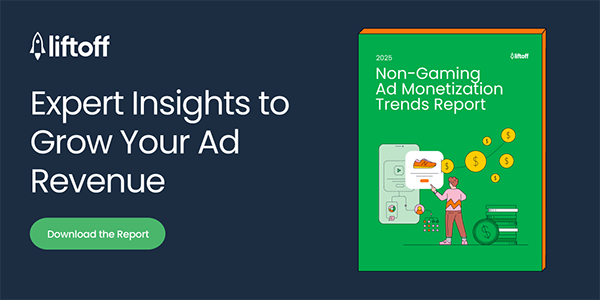As the lines between the gaming and non-gaming worlds continue to fade, gaming publishers are unlocking a massive opportunity: non-gaming advertisers. We’re already seeing a surge of in-app advertising (IAA) spend from non-gaming advertisers, but we’re about to see the flood gates opened by a major tech innovation: modern machine learning (ML) algorithms that turbocharge the formerly slow, resource-intensive and relatively unscientific process of finding audience overlaps.
Today’s neural networks will redefine partnerships, helping publishers and advertisers efficiently tap into new user bases.
As gaming goes mainstream, gaming audiences become more valuable
Gaming now reaches over 70% of US consumers, with three in five Americans playing at least an hour weekly, according to Emarketer. Meanwhile, gamification has spread beyond gaming: Points, levels and rewards shape experiences in news apps, food delivery and even tax filing.
Non-gaming brands are also adopting mobile gaming’s monetization tactics – hybrid models, in-app purchases and IAA. Playable ads, once exclusive to games, are now prevalent across industries, further blurring the lines between gaming and non-gaming.
These shifts are collectively fueling a rise in revenue from in-app advertising across the non-gaming space. AppsFlyer reported a 26% YOY growth of IAA revenue across all non-gaming categories. Our 2025 Non-Gaming Ad Monetization Trends Report revealed that ad revenue for entertainment apps grew 200% year-over-year on our Vungle Exchange. Social, music and utility categories, where users spend more time in-app, also saw significant growth.
More non-gaming brands are also increasing their own IAA spend, recognizing gaming audiences as high-value targets. Gaming publishers saw a 38% jump in ad spend from non-gaming brands last year, according to AppsFlyer’s report.
Pushing beyond “gaming ads for gaming audiences” — following retail media’s lead
Gaming publishers must look beyond the traditional “gaming for gaming” strategy – and retail media offers a playbook: Initially, retail media networks worked only with advertisers selling on their platforms. But when high-intent shoppers attracted broader interest, retail media expanded. For example, airlines realized they could target travelers shopping for luggage on Target’s retail media network.
The takeaway: A category-based IAA strategy is limiting. Gaming publishers must embrace non-gaming advertisers to unlock new revenue streams and user engagement opportunities.
Modern machine learning uncovers valuable overlapping audiences
We haven’t addressed the elephant in the room: Audience overlaps remain underleveraged because they’re hard to find. Traditional methods rely on slow, resource-heavy linear regressions and human assumptions about shared interests.
Today’s advanced ML algorithms eliminate these constraints, allowing advertisers to simply set objectives – ad spend, return on ad spend (ROAS) and target actions — while ML pinpoints the best audience matches.
The key here is the exponential processing capacity of modern neural networks. At Liftoff, the neural networks powering our Cortex models can do complex regressions in five seconds and process 10 times more training data than previous ML technologies. This speed allows you to incorporate new signal sets and do micro-categorization, refining app taxonomies to surface valuable audience insights.
For example: Puzzle players’ problem-solving mindsets and goal-oriented digital behaviors make them prime targets for productivity apps like note-taking, calendars and habit-tracking – keeping them organized, accomplishing and achieving. Users of real-money gambling (RMG) apps enjoy reward-based experiences, making them valuable targets for loyalty-based services – from something like Uber Eats to travel points programs. Players who enjoy relaxing games are likely interested in mental health apps and mindfulness routines.
ML makes IAA imminently scalable & cost-effective
With ML’s rapid analysis, identifying these audience overlaps is now practical, scalable and accessible for advertisers. At Liftoff, we see brands running micro-categorized campaigns across multiple exchanges, leveraging better targeting for smarter bidding decisions.
Better targeting and smarter decision-making prevent overspending while maximizing customer acquisition cost (CAC) and ROAS – often outperforming results from walled gardens.
Building a better ecosystem for all
If it’s not already apparent, we see this ML-powered audience analysis as equally advantageous to gaming publishers. After all, what’s good for advertisers is good for publishers.
By allowing advertisers to access new audiences while achieving better ROAS, this new model will continue to drive more ad budgets toward gaming publishers’ monetization offerings. And as more ad monetization shifts to in-app bidding, a more informed pool of advertisers will drive a more competitive auction environment – ultimately boosting CPMs and increasing yield for publishers.
In a gamified world, digital advertising is that rare case where everyone really can win.
For more articles featuring Tanya Lee, click here.















